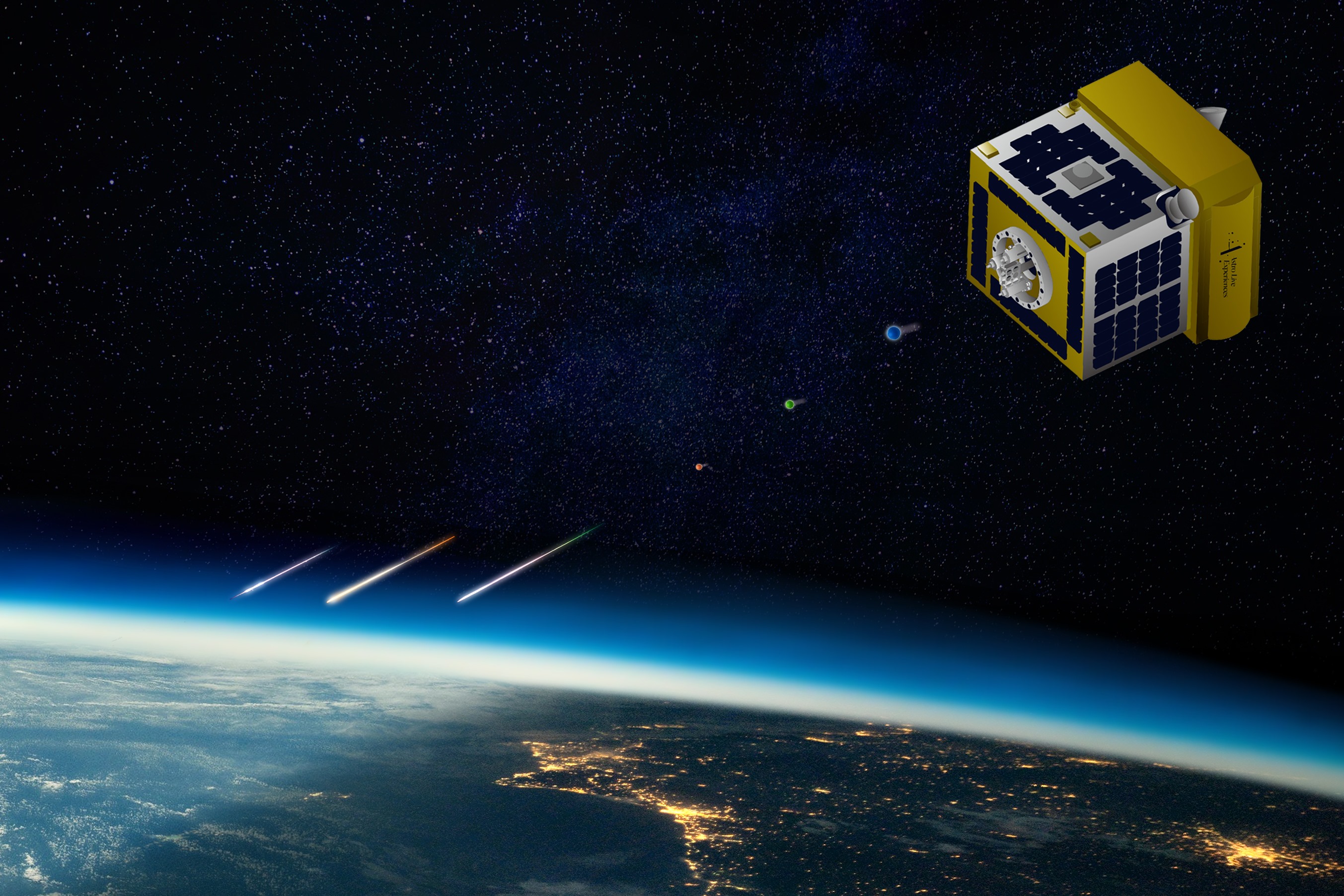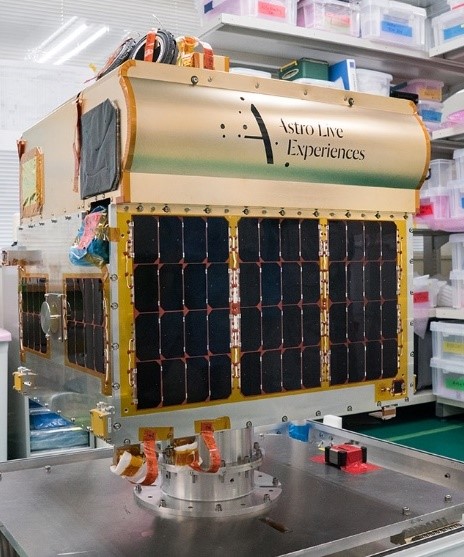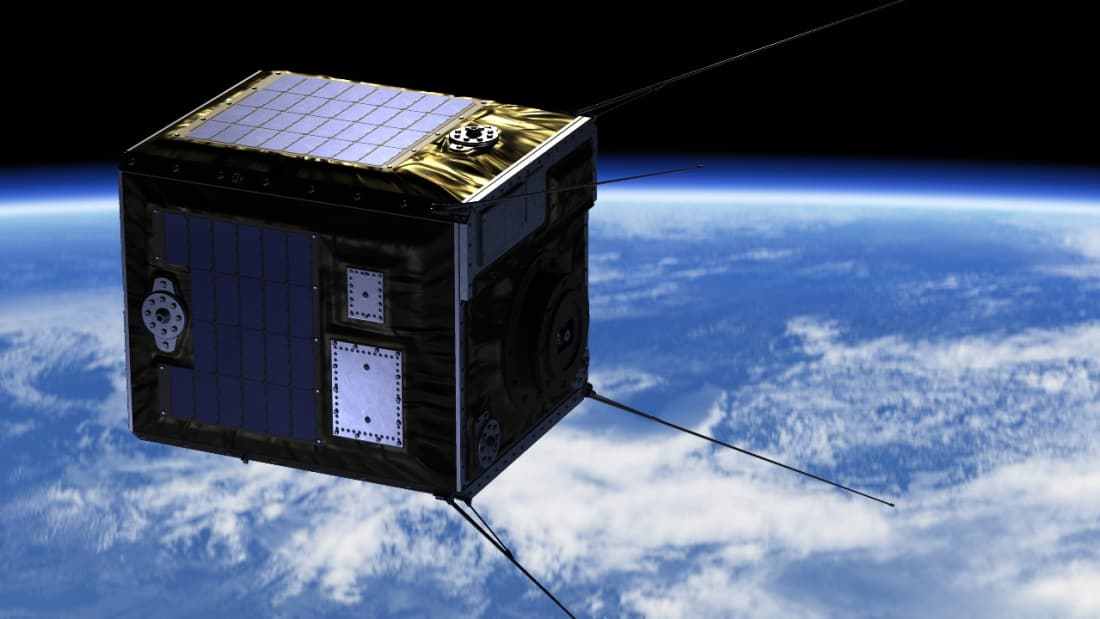
Rocket Lab's 10th launch will be memorable in multiple ways.
We already knew that the company's Electron rocket will take some big strides toward reusability on the upcoming mission, which is scheduled to lift off from New Zealand on Nov. 25. And we just learned that Electron will loft seven satellites on this flight, including a small Japanese craft designed to create artificial meteor showers.
The shooting-star satellite, known as ALE-2, was built by Tokyo-based company Astro Live Experiences as part of its "Sky Canvas" project. ALE-2 is 24 inches long by 24 inches wide by 31 inches tall (60 by 60 by 80 centimeters), weighs 165 lbs. (75 kilograms) and is packed with 400 0.4-inch (1 centimeter) spheres that are designed to burn up high in Earth's atmosphere, creating a gorgeous sky show.
Related: Rocket Lab and Its Electron Booster (Photos)
"With this launch, we are a step closer to realiz[ing] the man-made shooting star," Astro Live Experiences CEO Lena Okajima said in a statement. "Please look forward to the world's first demonstration we are aiming [for] in 2020, which will be a major milestone for ALE."
As its name suggests, ALE-2 is the Japanese company's second such satellite. The first, ALE-1, launched this January aboard a Japanese Epsilon rocket and is also scheduled to deploy its colorful sky pellets sometime in 2020, after some on-orbit tests, company representatives have said.
The artificial meteors will travel more slowly through Earth's sky than real ones and will thus remain visible longer — 3 to 10 seconds, ALE representatives have said. The pellets are designed to burn up completely between 37 and 50 miles (60 to 80 kilometers) above Earth's surface and therefore will pose no threat to people on the ground or planes in the air, according to a company FAQ.
Get the Space.com Newsletter
Breaking space news, the latest updates on rocket launches, skywatching events and more!
ALE envisions creating artificial showers for big events, such as the opening ceremony of the 2020 Summer Olympics in Tokyo. The "shooting stars" should be visible to people across a region about 125 miles (200 km) wide, company representatives have said.


The other six satellites going up on the Electron later this month are ATL-1, a Hungarian craft that will test a new thermal isolation material; FossaSat-1, a Spanish communications satellite that can fit in the palm of your hand; NOOR 1A and NOOR 1B, communication satellite demonstrators operated by the U.S. company Stara Space; SMOG-P, a payload built by students at Hungary's Budapest University of Technology and Economics that will measure electromagnetic pollution; and TRSI Sat, which will be run by ACME AtronOmatic, a company that provides flight-tracking services to the aviation community and other users.
You can read more about these payloads in this Rocket Lab statement.
The Nov. 25 mission, which Rocket Lab calls "Running Out of Fingers," will be the company's 10th launch overall and sixth of 2019. But Rocket Lab plans to ramp up its cadence considerably, eventually getting Electron rockets off the ground every week, or perhaps even more frequently.
To help make that happen, the company wants to start recovering and reusing the first stage of the two-stage, 57-foot-tall (17 meters) Electron, which is capable of lofting a maximum of about 500 lbs. (225 kg) to orbit.
Running Out of Fingers will mark a big step toward this goal, if all goes according to plan. The first stage flying on Nov. 25 is outfitted with a variety of sensors and navigation gear, as well as a reaction-control system that will allow the booster to orient itself as it descends.
The main goal is to "see if we can bring this back from space into the atmosphere without breaking up or disintegrating," Lars Hoffman, Rocket Lab's senior vice president of global launch services, said during a panel discussion yesterday (Nov. 6) at the U.S. Air Force's first Space Pitch Day in San Francisco. "We will learn from that, and then we'll move on, move on, move on."
If everything works out, Rocket Lab will eventually move on to catching falling Electron first stages with a helicopter, then inspecting and reflying them in relatively short order.
Running Out of Fingers, like all previous Rocket Lab missions, will lift off from the company's Launch Complex 1, on New Zealand's North Island. But Electron rockets will soon start flying from American soil as well. Launch Complex 2, which Rocket Lab has been building at the Mid-Atlantic Regional Spaceport in Virginia, should be ready to host missions before the end of 2019, company representatives have said.
- Rocket Lab Aims to Win Cubesat-Launching Race
- It's Business Time! Rocket Lab Lofts 6 Satellites on 1st Commercial Launch
- Cubesats: Tiny, Versatile Spacecraft Explained (Infographic)
Mike Wall's book about the search for alien life, "Out There" (Grand Central Publishing, 2018; illustrated by Karl Tate), is out now. Follow him on Twitter @michaeldwall. Follow us on Twitter @Spacedotcom or Facebook.

Join our Space Forums to keep talking space on the latest missions, night sky and more! And if you have a news tip, correction or comment, let us know at: community@space.com.

Michael Wall is a Senior Space Writer with Space.com and joined the team in 2010. He primarily covers exoplanets, spaceflight and military space, but has been known to dabble in the space art beat. His book about the search for alien life, "Out There," was published on Nov. 13, 2018. Before becoming a science writer, Michael worked as a herpetologist and wildlife biologist. He has a Ph.D. in evolutionary biology from the University of Sydney, Australia, a bachelor's degree from the University of Arizona, and a graduate certificate in science writing from the University of California, Santa Cruz. To find out what his latest project is, you can follow Michael on Twitter.









